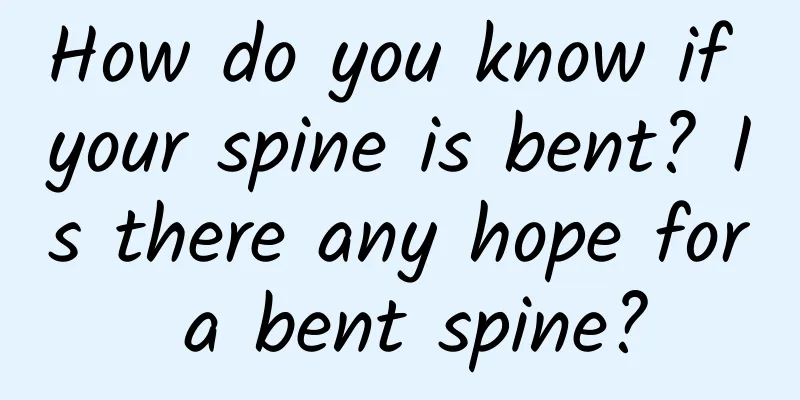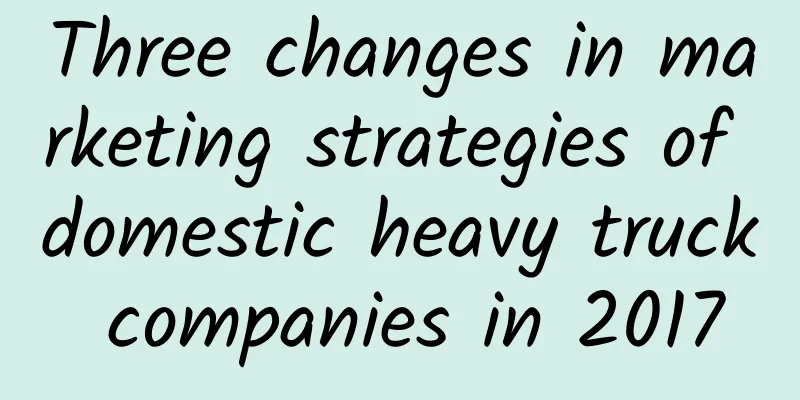How do you know if your spine is bent? Is there any hope for a bent spine?

|
Not long ago, a hot search on Weibo made many people feel a chill down their spines: a survey showed that there are more than 5 million primary and secondary school students with scoliosis in China. For this reason, the National Health Commission requires that scoliosis screening be included in student physical examinations and the results be recorded in health records. More than 5 million students suffer from scoliosis. Image source: Weibo When it comes to health problems related to the spine, most people first think of cervical spondylosis and lumbar disc herniation, but these do not seem to have anything to do with young students. If we talk about what spinal problems students may have, the most common one should be hunchback. What about scoliosis? What is scoliosis? Scoliosis literally means that the spine deviates from the central axis and bends to one side of the body. Strictly speaking, scoliosis refers to a part of the spine (one or several segments) that deviates from the midline of the body in the coronal plane (the coronal plane is an anatomical concept, which refers to the cross-section that cuts the body into front and back parts along the left and right direction) and bends sideways. The blue section in the picture is the coronal plane. Similarly, the red section is the sagittal plane, and the green section is the cross-section (or horizontal plane). Image source: Wikipedia Of course, in general, scoliosis is also accompanied by rotation of the spine and lordosis or kyphosis of the spine in the sagittal plane (the spine also has a certain curvature in a normal state, but when scoliosis occurs, the lordosis or kyphosis deviates from the normal range). The left and middle are normal spinal morphology, and you can see the normal curvature of the spine. The right side is the spinal morphology of scoliosis. Image source: mayoclinic The causes of scoliosis are very complex. Some people suffer from genetic defects and congenital spinal deformities, but since so many children suffer from scoliosis, it obviously cannot be entirely attributed to genetics. Unfortunately, it is difficult to find a clear cause for most scoliosis in children, so this type of scoliosis is called idiopathic scoliosis (generally, the cause of the disease named "idiopathic..." is not very clear). Idiopathic scoliosis accounts for about 80% of the total number and is more common in adolescents. It is generally believed that the factors related to adolescent idiopathic scoliosis include genetics, connective tissue, muscles, platelets, hormones, neurogenic mechanisms, biomechanical mechanisms, etc. So, will a heavy schoolbag cause scoliosis? In fact, carrying a heavy bag, bad sitting posture, walking habits, etc., have little to do with idiopathic scoliosis. Carrying a heavy bag will cause postural kyphosis, but will not cause idiopathic scoliosis. The reason why it is called idiopathic is that the cause of the disease is not clear at present. How do you know if your spine is bent? Is there any hope for a bent spine? Is there any hope for a bent spine? It is generally not difficult to judge scoliosis. The first thing to do is to look at the appearance. If the following situations occur, you should be alert to scoliosis: the left and right shoulders are of different heights (commonly known as uneven shoulders), hunchback (yes, hunchback may be caused by scoliosis), protruding shoulder blade on one side, protruding ribs on one side, asymmetric waist, different heights of the hips on both sides, protrusion of one side of the back when bending over, etc. Of course, to determine the severity of scoliosis, imaging examinations are still necessary. Severe scoliosis is easy to spot. Image source: Reference [2] If you suspect that you have scoliosis, be sure to consult a doctor as soon as possible (if you go to the hospital, go to the orthopedics or spinal surgery department) and do not let the disease develop to the point where it affects your normal life. The treatment of scoliosis varies greatly depending on its severity. For the mildest scoliosis, no special treatment may be needed. You just need to pay attention to maintaining correct standing and sitting postures and check the condition of your spine regularly. Patients with more serious scoliosis can choose sports rehabilitation and regularly check changes in the spinal condition. For moderate to severe scoliosis, conservative treatment (braces, plaster, etc.) or surgery can be considered. Various types of scoliosis braces, image source: Reference [2] Generally speaking, most patients can achieve better treatment results with early detection and early treatment. Surgery will only be considered for cases where the best time for correction has been missed or other treatment effects are poor. You may ask, scoliosis just makes the posture a little ugly, is it really serious enough to require surgery? Scoliosis has many harmful effects, early prevention keeps you healthy It is indeed that serious, because scoliosis affects more than just posture. Severe scoliosis will affect the patient's cardiopulmonary function ; female patients may experience pelvic tilt, affecting fertility ; and the scoliotic spine makes the muscles on both sides asymmetrical, making muscles more susceptible to muscle fatigue ; severe scoliosis may also lead to nerve compression and even the risk of spinal stenosis or even paralysis . It sounds scary, so is there any way to prevent scoliosis? Trying to reduce the weight on the spine, maintaining a correct standing and sitting posture (avoiding bad sitting postures such as crossing your legs), strengthening physical exercise, and maintaining a correct sleeping posture (do not use a mattress that is too soft) are all helpful in preventing scoliosis. For overweight children, they should also pay attention to weight control. Supplementing folic acid before pregnancy can reduce the risk of congenital scoliosis. However, early detection and early treatment are the most important. Although the incidence of scoliosis is high, early intervention can largely prevent the condition from getting worse and achieve ideal treatment results. I won’t say any more. I’m going to go check my spine. Do you know the spine? Many people use the terms spine and vertebrae interchangeably, but in fact, spine is not equal to vertebrae. Spine is actually the abbreviation of vertebrae (also called vertebrae), which are irregular bones. A single vertebra consists of a vertebral body and a vertebral arch, with a tapered hole between the two. A typical vertebra looks like this. Image source: anatomystandard Human vertebrae can be divided into five categories: cervical vertebrae (7 vertebrae), thoracic vertebrae (12 vertebrae), lumbar vertebrae (5 vertebrae), sacral vertebrae (5 sacral vertebrae fused into one sacrum) and coccygeal vertebrae (4 coccygeal vertebrae fused into one coccyx). The morphology of various vertebrae, image source: anatomystandard When the vertebrae are connected into a coherent whole with the help of intervertebral discs and ligaments, the spine is formed. The foramina between the vertebrae are also tightly connected to form a long tube (the vertebral canal) through which blood vessels and nerves pass. The vertebrae are connected one by one to form the spine. The above picture shows three different angles. Image source: anatomystandard The spine is located on the central axis of our body, which is a strong pillar of the body and also provides protection for the spinal cord. Moreover, because the spine is composed of vertebrae that are both independent and interconnected, our flexibility in movement is greatly improved. The spine is both hard and soft. Image source: hippopx References: [1] Zhang Hengliang, Li Xuming, Yang Ming. Effect of core muscle strength training on the treatment of adolescent idiopathic scoliosis[J]. Chinese Rural Health Care Administration, 2014, 34(11): 1432-1434. [2]Weiss HR. Is there a body of evidence for the treatment of patients with Adolescent Idiopathic Scoliosis (AIS)? Scoliosis 2, 19 (2007). [3] Wu Minhao, Sun Wenchao, Yan Feifei, Xie Yuanlong, Hou Zhiqiang, Feng Fan, Cai Lin. Research and new progress in the treatment of early-onset scoliosis[J]. Chinese Journal of Tissue Engineering Research, 2017, 21(03): 433-439. [4] Wang Lu, Li Yawen. Hunchback and hunchback should beware of scoliosis[N]. People's Health News, 2021-03-16(003). END Tadpole Musical Notation original article, please indicate the source when reprinting Editor/Xiao Xitushuo |
<<: Do you know where the fire-fighting facilities are around you?
>>: A seagull that always wanted to eat some fries swallowed a cell phone one day
Recommend
Low cost and high activity, how to recall users?
What I will talk about today is mainly related to...
The seemingly ordinary "little light bulb" is actually an amazing "big technology"
Produced by: Science Popularization China Author:...
WeChat releases version 8.0.5: Freeze friends’ WeChat accounts with one click, no longer worried about losing your phone
WeChat has not been a perfect application since i...
Thumbs up! my country has overcome this problem
recently #Experts overcome the difficulties in gr...
up to date! Information flow platform traffic ranking! What is the ranking of the platform you promote?
Do you remember how much advertising cost in Sept...
Who threw green paint on Kapibala? ? | Environmental Trumpet
AI discovers traces of endangered birds Although ...
How to attract new users and retain them?
01 This morning, I eavesdropped on a two-hour MLM...
Apple AI is online, ChatGPT is free to use! The first M4 Mac is born, Cook: This is the best AI all-in-one machine in the world
Just now, Apple AI officially landed on iPhone, i...
Sony is relaunching the AIBO robot dog after 12 years of discontinuation. This is a combination of "past + future"
In 1999, Sony released a companion robot, AIBO, w...
618 Advertising tips for the education and training industry!
With the arrival of the 618 mid-year sale, educat...
101 years old! The world's oldest doctor reveals 5 secrets to longevity and anti-aging, which many people fail to follow
Imagine if you go to see a doctor and the doctor ...
Yotta《Learning AE from Scratch》
Course Catalog ├──Learn AE from Scratch (Part 1)|...
Wrong "light diet" may lead to dementia! What doctors mean by "light diet" is actually...
I believe everyone is familiar with this scene in...
The largest merger in the automotive industry has been completed! The world's fourth largest automaker with annual revenue exceeding one trillion is born
Although the epidemic is still raging, it has not...
The entire city of Shanghai has been cleared of social contact! When will the blockade be lifted? Attached is the latest news!
Social zero refers to the community spread of the...









